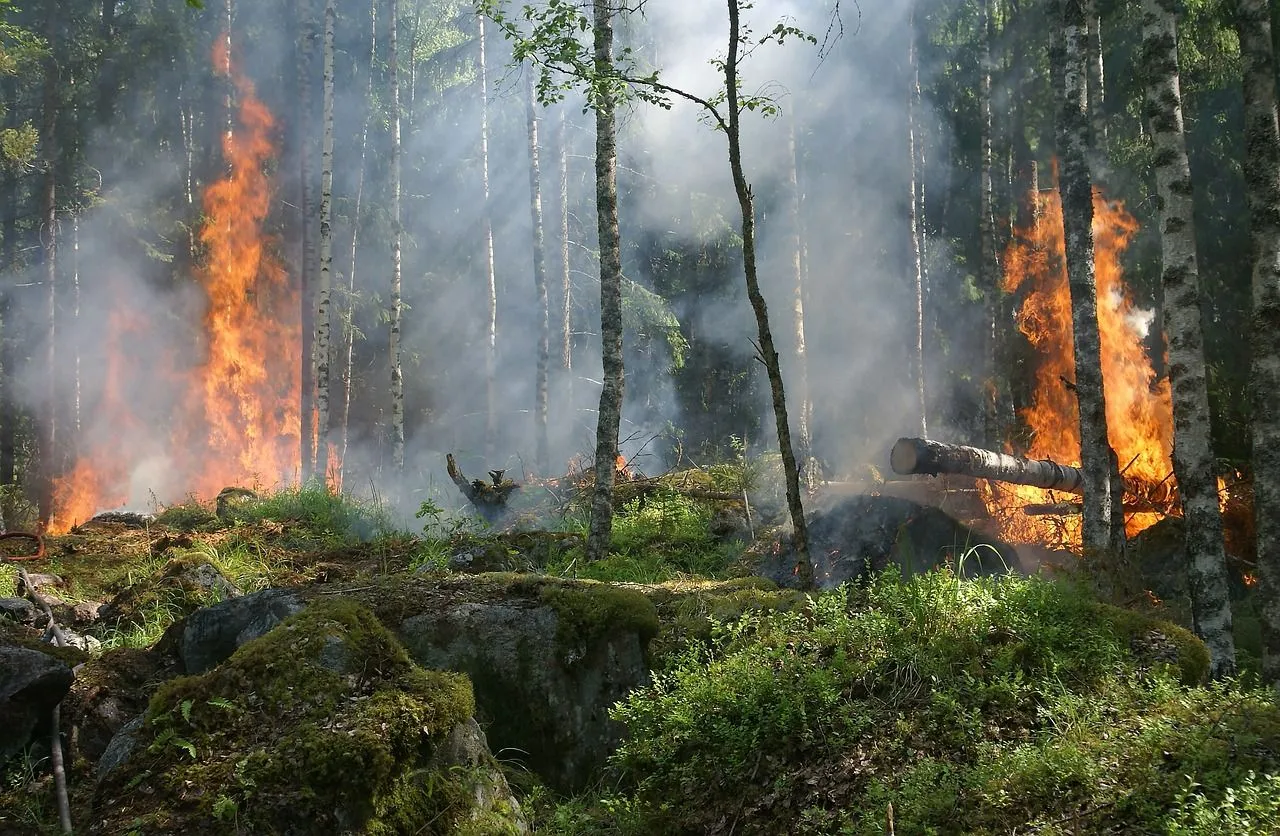Trees also react to wildfires: they hold their breath!
Published by Cédric,
Article author: Cédric DEPOND
Source: Colorado State University
Other Languages: FR, DE, ES, PT
Article author: Cédric DEPOND
Source: Colorado State University
Other Languages: FR, DE, ES, PT
Follow us on Google News (click on ☆)
Faced with dense smoke, trees close their pores, called stomata, to protect themselves from harmful gases and particles, thus affecting their vital photosynthesis process.

Illustrative image Pixabay
Stomata are small pores found on plant leaves. They allow the absorption of carbon dioxide (CO₂) necessary for photosynthesis, an essential process for plant growth and the release of oxygen into the atmosphere. Stomata also regulate transpiration, helping to maintain the plants' internal temperature.
In response to environmental factors such as light, humidity, or drought, stomata can open or close to conserve water and protect the plant's internal tissues.
When wildfire smoke pervades the atmosphere, plants respond by closing their stomata to limit the intake of harmful particles and other chemical compounds. This closure almost zeroes out their photosynthetic capacity. This reaction is similar to humans who, faced with high pollution levels, protect themselves by staying indoors.
During their observations, Delphine Farmer and Mj Riches noted that ponderosa pines exposed to dense smoke stopped "breathing" by completely closing their pores, preventing CO₂ absorption and significantly reducing the emission of volatile organic compounds (VOCs).
VOCs play a key role in the defense of plants against insects and in communicating with neighboring plants. Additionally, they participate in the formation of secondary organic aerosols, influencing air quality. In the presence of smoke, VOC emissions decrease, suggesting a negative impact on the plant's ability to interact with its environment.
The impact of these reactions on plant health in the long term is still uncertain. Although trees may resume their normal photosynthesis function after the smoke dissipates, the cumulative effects of repeated smoke episodes could disrupt plant growth and affect ecosystems.
Tropospheric ozone formation, another potential hazard, results from the reaction of VOCs with nitrogen oxides under sunlight. This ozone can damage plant tissues and hinder photosynthesis.
With the increasing frequency and intensity of wildfires, it is essential to continue research to understand these long-term impacts. This knowledge is important for adapting forest management policies and minimizing negative effects on biodiversity and ecosystem health.